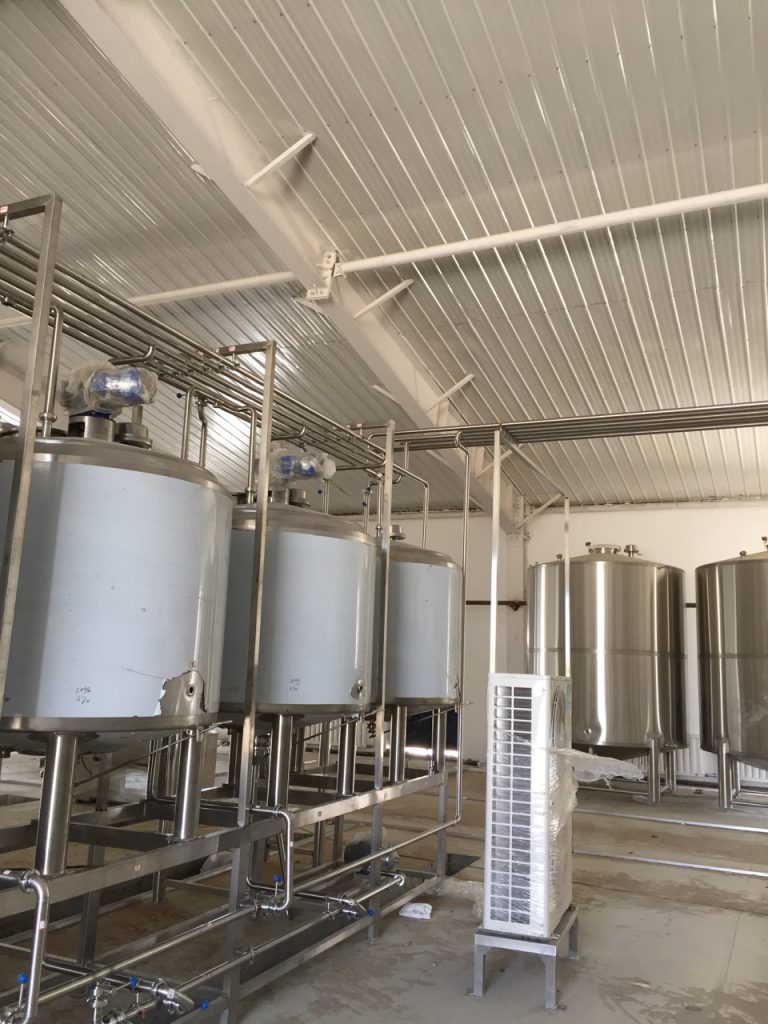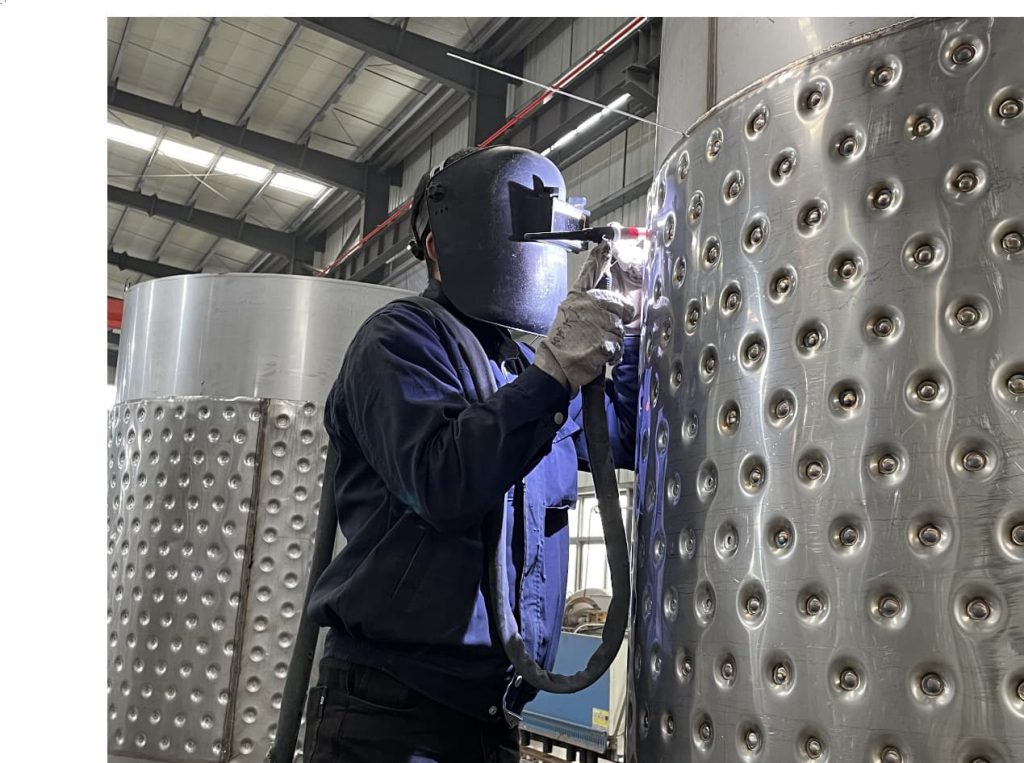Einführung

In der Milchindustrie ist die Erhaltung der Frische und Qualität der Milch von entscheidender Bedeutung. Für Unternehmen, die Milch produzieren, vertreiben oder verkaufen, ist ein zuverlässiger Milchkühltank nicht nur eine Option, sondern eine Notwendigkeit. Dieser Artikel befasst sich mit den unzähligen Vorteilen einer Investition in einen modernen Milchkühltank und zeigt, warum er für jedes Unternehmen in der Milchindustrie ein unverzichtbares Gerät ist.
Die Bedeutung der Temperaturkontrolle
Understanding Milk Preservation
Milk is a perishable product that requires precise temperature control to ensure its safety and quality. A milk cooler tank helps maintain the optimal temperature to prevent spoilage, bacterial growth, and quality degradation. Keeping milk at the right temperature also ensures it meets health and safety standards, which is critical for regulatory compliance.
How Modern Milk Cooler Tanks Work
Modern milk cooler tanks use advanced refrigeration technology to keep milk at a consistent temperature. These tanks are designed to rapidly chill milk to a safe temperature and maintain it throughout storage and transportation. This capability is essential for extending the shelf life of milk and preserving its nutritional value.
Advantages of Modern Milk Cooler Tanks
Enhanced Cooling Efficiency
One of the key benefits of modern milk cooler tanks is their enhanced cooling efficiency. These tanks are equipped with state-of-the-art cooling systems that provide faster and more uniform cooling compared to older models. This efficiency helps in reducing energy consumption and operational costs.
Improved Hygiene and Safety
Modern milk cooler tanks are designed with hygiene and safety in mind. They often come with features such as automatic cleaning systems and antimicrobial surfaces that reduce the risk of contamination. Ensuring that the milk is stored in a clean environment is crucial for maintaining its quality and safety.
Energy Efficiency and Cost Savings
Investing in a modern milk cooler tank can lead to significant energy savings. These tanks are built with energy-efficient components and insulation materials that minimize heat exchange and reduce power consumption. Over time, the savings on energy bills can offset the initial investment cost.
Features to Look for in a Modern Milk Cooler Tank
Temperaturregelung und -überwachung
When choosing a milk cooling tank, it is important to select one with reliable temperature control and monitoring features. Advanced models offer digital displays, temperature alarms, and remote monitoring capabilities to ensure that the milk is stored at the correct temperature at all times.
Capacity and Size Options
Milk cooler tanks come in various sizes and capacities to accommodate different business needs. From small tanks suitable for local dairies to large tanks designed for commercial operations, selecting the right size is crucial for optimizing storage and handling.
Durability and Construction
The construction quality of a milk cooling tank affects its longevity and performance. Modern tanks are typically made from high-quality stainless steel and feature robust construction to withstand the rigors of daily use. Investing in a durable tank ensures long-term reliability and reduces maintenance costs.
Key Considerations for Selecting the Ideal Milk Cooler Tank
| Faktor | Beschreibung | Why It Matters |
|---|---|---|
| Cooling Technology | Types include air-cooled, water-cooled, or hybrid systems. | Affects cooling efficiency and energy consumption. |
| Temperaturbereich | The range of temperatures the tank can maintain (e.g., 2°C – 8°C). | Ensures proper storage conditions for milk. |
| Kapazität | The volume of milk the tank can hold (e.g., 500 liters, 1000 liters). | Must match your production and storage needs. |
| Isolierung | Quality of insulation material (e.g., polyurethane foam). | Impacts energy efficiency and cooling performance. |
| Material | Common materials include stainless steel or food-grade plastics. | Affects durability, maintenance, and hygiene. |
| Cleaning System | Includes automatic or manual cleaning options. | Ensures ease of maintenance and hygiene. |
| Energieeffizienz | Energy consumption ratings and features like eco-friendly cooling systems. | Affects operational costs and environmental impact. |
| Temperaturüberwachung | Features like digital displays and remote monitoring capabilities. | Enhances control over storage conditions. |
| Kosten | Initial purchase price and long-term operational costs. | Important for budgeting and cost management. |
Case Studies: Success Stories with Modern Milk Cooler Tanks
Dairy Farm Case Study
A local dairy farm upgraded to a modern milk cooling tank and experienced a 20% increase in milk quality and shelf life. The improved cooling efficiency reduced spoilage rates and led to higher customer satisfaction.
Distribution Center Case Study
A large milk distribution center implemented advanced milk cooling tanks and saw a 15% reduction in energy costs. The improved temperature control and monitoring capabilities also enhanced compliance with health regulations.
Maintenance and Care Tips

Routine Maintenance
To ensure the optimal performance of a milk cooler tank, regular maintenance is essential. This includes checking the refrigeration system, cleaning the interior, and inspecting seals and gaskets. Following the manufacturer’s maintenance guidelines can extend the life of the tank and prevent costly repairs.
Fehlerbehebung bei allgemeinen Problemen
Common issues with milk cooler tanks include temperature fluctuations, unusual noises, and cooling inefficiencies. Troubleshooting these issues typically involves checking for leaks, ensuring proper ventilation, and inspecting the refrigeration components. For persistent problems, consulting a professional technician is advisable.
Abschluss
Investing in a modern Milchkühltank offers numerous benefits for businesses in the dairy industry. From enhanced cooling efficiency and improved hygiene to energy savings and durability, the advantages are clear. By choosing the right milk cooler tank and maintaining it properly, businesses can ensure the freshness and quality of their milk, leading to increased customer satisfaction and operational success.
Häufig gestellte Fragen
Q:What is a Milchkühltank?
A:A milk cooler tank is a specialized container designed to store milk at a controlled temperature to prevent spoilage and maintain quality. It uses advanced refrigeration technology to keep the milk at the optimal temperature.
Q:How often should I clean my milk cooler tank?
A:The frequency of cleaning depends on usage and manufacturer recommendations. Typically, a milk cooler tank should be cleaned regularly, at least once a week, to ensure hygiene and prevent contamination.
Q:Can I use a Milchkühltank for other dairy products?
A:Many modern milk cooler tanks are versatile and can be used for storing various dairy products, including cream, yogurt, and cheese. However, it is important to check the manufacturer’s specifications to ensure compatibility.
Q:How do I choose the right size milk cooler tank for my business?
A:The right size depends on your business’s storage needs and volume of milk handled. Consider factors such as daily milk production, storage space, and future growth when selecting a tank.
Q:Are there any government regulations for milk cooler tanks?
A:Yes, there are regulations governing the storage and handling of milk to ensure safety and quality. These regulations vary by region, so it is important to familiarize yourself with local standards and ensure compliance.

